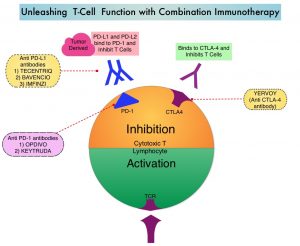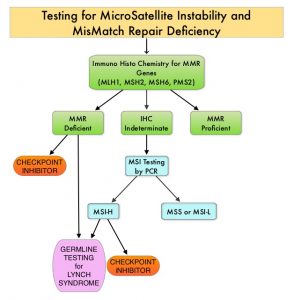SUMMARY: The American Society of Clinical Oncology on June 20, 2020, approved the first joint Musculoskeletal Tumor Society (MSTS)/American Society for Radiation Oncology (ASTRO)/ASCO guideline on the care of patients with metastatic carcinoma and myeloma of the femur. The skeleton is a frequent site of metastatic carcinoma and myeloma. Primary malignancies that commonly metastasize to bone include breast, lung, prostate, kidney, and thyroid. The incidence of bone metastases is approximately 70% in patients with breast or prostate cancer and 35% in patients with lung or kidney cancer, based on autopsy studies. The lifetime risk of developing multiple myeloma is 1 in 132, and 70-80% of patients present with osteolytic lesions in the skeleton. Malignant lesions involving the bone can be painful and can result in pathologic fractures, impairing functional capacity, quality of life and Overall Survival (OS). These patients may require radiation therapy, surgery or both. The National Institutes of Health estimated that for the years 2000-2004, the national economic burden of metastatic bone disease was 12.6 billion dollars, representing 17% of the total direct medical cost of oncology care. These costs would be significantly higher in 2020.
The following recommendations were prepared and endorsed by the Musculoskeletal Tumor Society (MSTS), American Society for Radiation Oncology (ASTRO), and American Society of Clinical Oncology (ASCO). The purpose of this Clinical Practice Guideline is to provide medical, radiation, and surgical providers with a practical set of recommendations, regarding the management of patients with metastatic or myelomatous lesions of the femur, based on a systematic review of published information and consensus expert opinion. These guideline recommendations are intended to guide medical oncologists, radiation oncologists, and primary care physicians in making timely referrals, and address three main therapeutic areas-the use of Bone Modifying Agents, radiation therapy, and surgery.
1) Imaging and Clinical Findings: A combination of imaging findings and lesion-related pain is predictive of risk of pathologic femur fracture. There is no reliable evidence to suggest that MRI is a strong predictor of femur fracture.
2) Efficacy of Bone Modifying Agents (BMAs): The use of BMAs may assist in reducing incidence of femur fractures in patients with metastatic carcinoma or multiple myeloma and bone lesions.
3) Dosage Response of BMAs: Clinicians should consider decreasing the frequency of Zoledronic acid dosing to 12 weeks (compared to the standard 4-week interval), as this is associated with non-inferior Skeletal Related Events outcomes and similar adverse event rates, in patients with metastatic carcinoma or multiple myeloma. Clinicians should consider long-term use of BMAs to reduce skeletal related events in patients with multiple myeloma.
4) BMAs for Various Diagnoses: BMAs should be considered in patients with metastatic carcinoma or multiple myeloma with bone lesions at risk for fracture, regardless of tumor histology.
5) Imaging Findings and Atypical Fractures: Imaging findings of lateral cortical thickening may be associated with increased atypical femur fracture risk.
6) Efficacy of Radiation Therapy: Clinicians should consider the use of radiation therapy to decrease the rate of femur fractures in patients with metastatic carcinoma or multiple myeloma lesions, considered at increased risk, based on the combination of imaging findings and lesion-related pain.
7) Radiation Therapy and Prophylactic Femur Stabilization: Clinicians may consider the use of radiation therapy in patients undergoing prophylactic femur stabilization to reduce pain, improve functional status, and reduce the need for further intervention.
8) Radiation Therapy after Resection and Reconstruction: Radiation therapy may be considered after resection and reconstruction to reduce pain, improve functional status, and reduce the need for further intervention in patients with residual tumor, or those at increased risk of tumor recurrence.
9) Multi-Fraction Radiation Treatment: Clinicians should consider the use of multi-fraction in lieu of single fraction radiation treatment to reduce the risk of fracture in patients with metastatic carcinoma in the femur.
10) Estimating Survival and Reconstruction Method: Surgeons should utilize a validated method of estimating survival of the patient in choosing the method of reconstruction. Longer survival estimates may justify more durable reconstruction methods such as arthroplasty, if clinically appropriate.
11) Long Stem Hemiarthroplasty: When treating a femoral neck fracture with hemiarthroplasty, use of a long stem can be associated with increased intra-operative and post-operative complications and should only be used in patients with additional lesions in the femur.
12) Cephalomedullary Nailing: There is no advantage to routine use of cephalomedullary nails for diaphyseal metastatic lesions, as there does not appear to be a high frequency of new femoral neck lesions following intramedullary nailing.
13) Arthroplasty: Clinicians may consider arthroplasty to improve patient function and decrease the need for post-operative radiation therapy in patients with pathologic fractures from metastatic carcinoma in the femur.
http://msts.org/view/download.php/education/mbd-cpg-amended. Accessed October 28, 2020.


